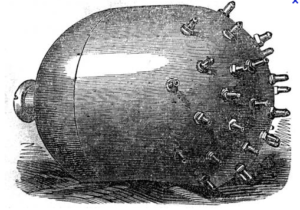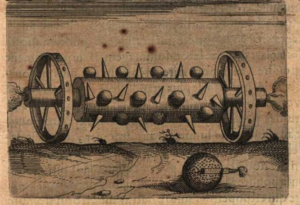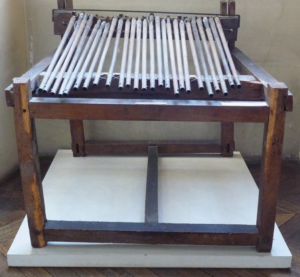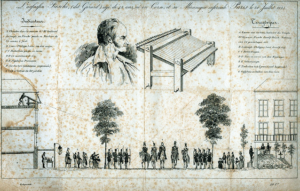The Orsini bomb was a remarkable terrorist IED in the form of a hand grenade used in 1858 by Italian Felix Orsini in an assassination attempt on the French Emperor. The bomb or IED was originally designed by a Hungarian artillery officer.

The IED casing was made by English gun maker Joseph Taylor In Birmingham and tested in Sheffield and Devon. Taylor claimed he thought the the device a genuine piece of ordnance. The grenades were then smuggled into France as “gas machinery” components.
What is important in terms of IED design and explosive history is that the entire fill of the device was primary explosive, mercury fulminate. The protuberances mounted crushable percussion caps, as used on small arms of the time.
In one of those peculiar coincidences of history, Orsini decided to attack the target as he went to the Opera. Readers of this blog will know the story of a previous IED attack on the “original” Napoleon in 1800, while he too was on his way to the opera, some 58 years earlier.
Three of the Orsini bombs were thrown, killing 8 people and wounding 142 (including Orsini himself). But the Emperor Napoleon and his wife were both unhurt. Here’s a description of the plan from a participant:


Here’s another odd thing – an Orsini grenade was dug up in a field in Arkansas in the 1950s – discussed here, which includes a beautiful photo of one of the devices. I know a lot of improvised grenades were used in the American Civil War – perhaps Orsini’s designs were copied?
If you think that improvised grenades have advanced much, technologically, in the 150 years since Orsini, then I suggest you take a look at this from CJ Chivers excellent blog, showing some Syrian improvised grenades.
Update on Sunday, December 30, 2012 at 8:08PM by Roger Davies
There’s an interesting follow up to Orsini’s colleague, De Rudio. (De Rudio is quoted directly in the report above) He was sentenced to jail, not execution. He then escaped, fled to Italy and thence to the US. Eventually he joined the US Army, fought in the Civil War, and then joined the 7th Cavalry under Custer. He fought and survived the battle of Little Big Horn,died in 1910 and is buried in the Praesidio in San Francisco. I kid you not. Perhaps the Orsini grenade found in an Arkansas field in 1953 fell out of his pocket? ; -)
Update on Sunday, December 30, 2012 at 8:19PM by Roger Davies
The William Tell Connection. In the assassination attempt outlined above, the target Emperor Napoleon III was en route to the opera with his wife, to see a performance of Rossini’s “William Tell”.
In Barcelona in 1893, some 35 years later, an anarchist called Santiago Salvador threw two “Orsini bombs” into the audience at the Liceu theater, killing 22 and wounding 30. He threw the grenades during the second act of an Opera – and the name of the Opera was — Rossini’s “William Tell”.










